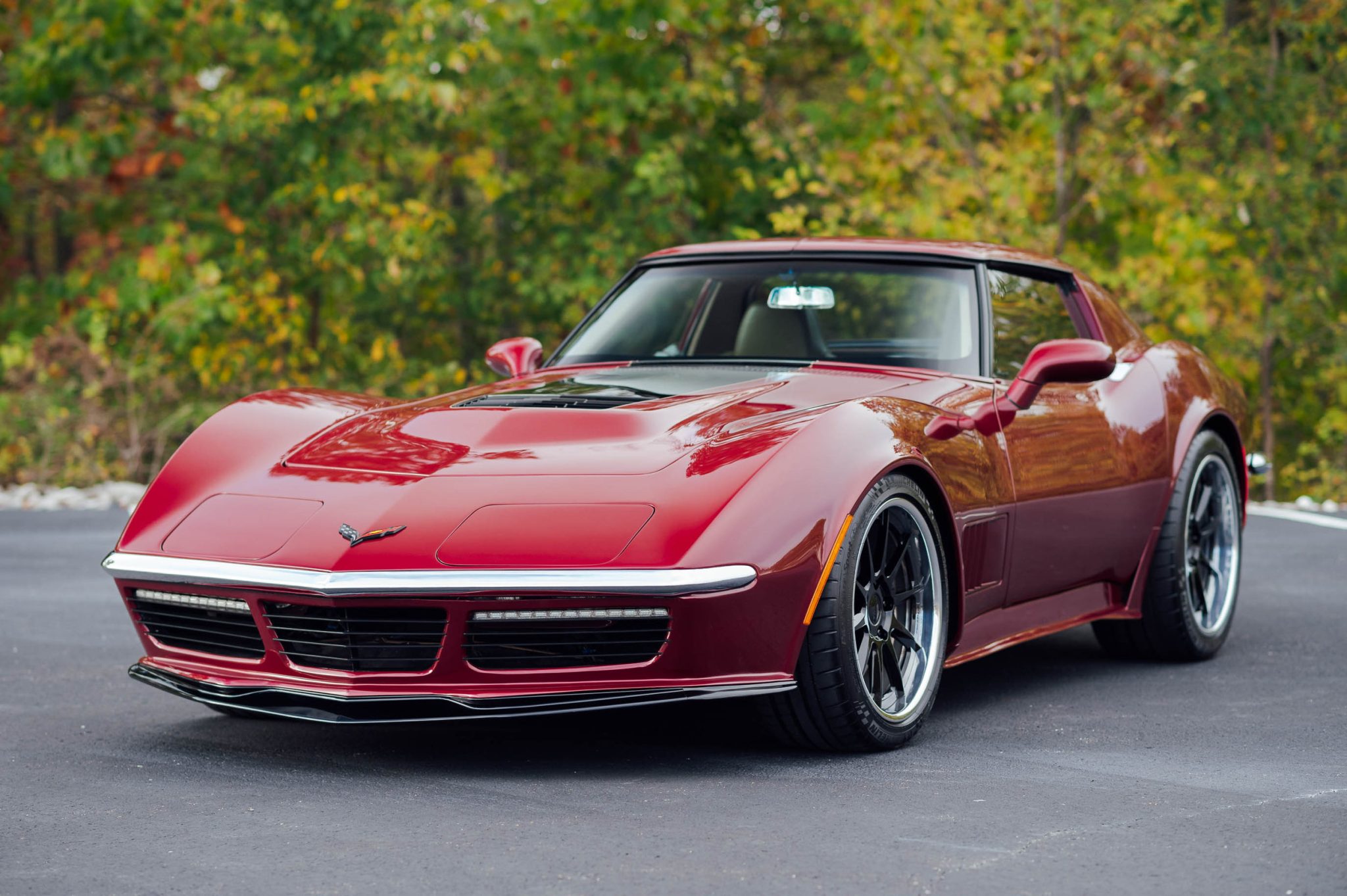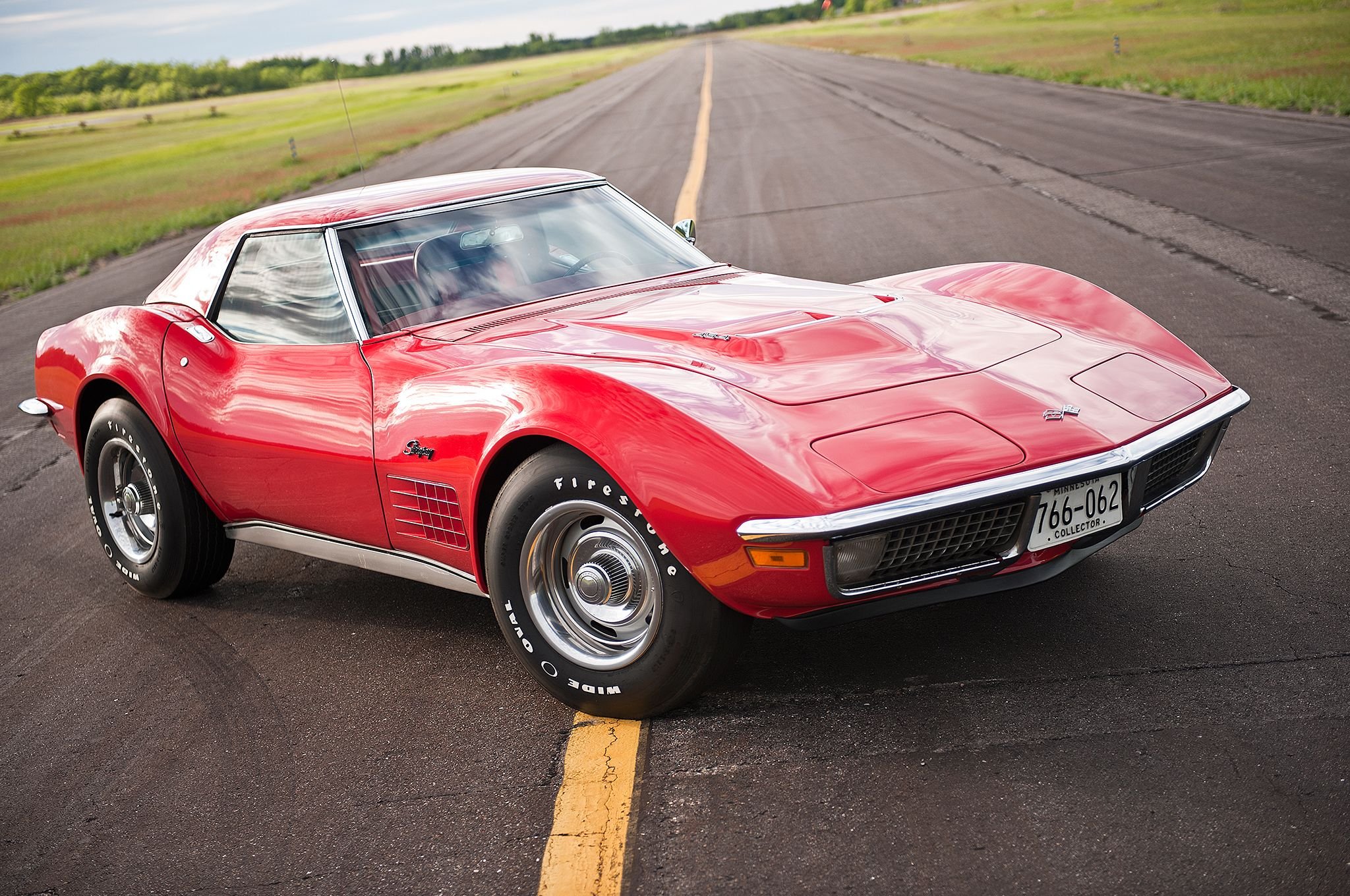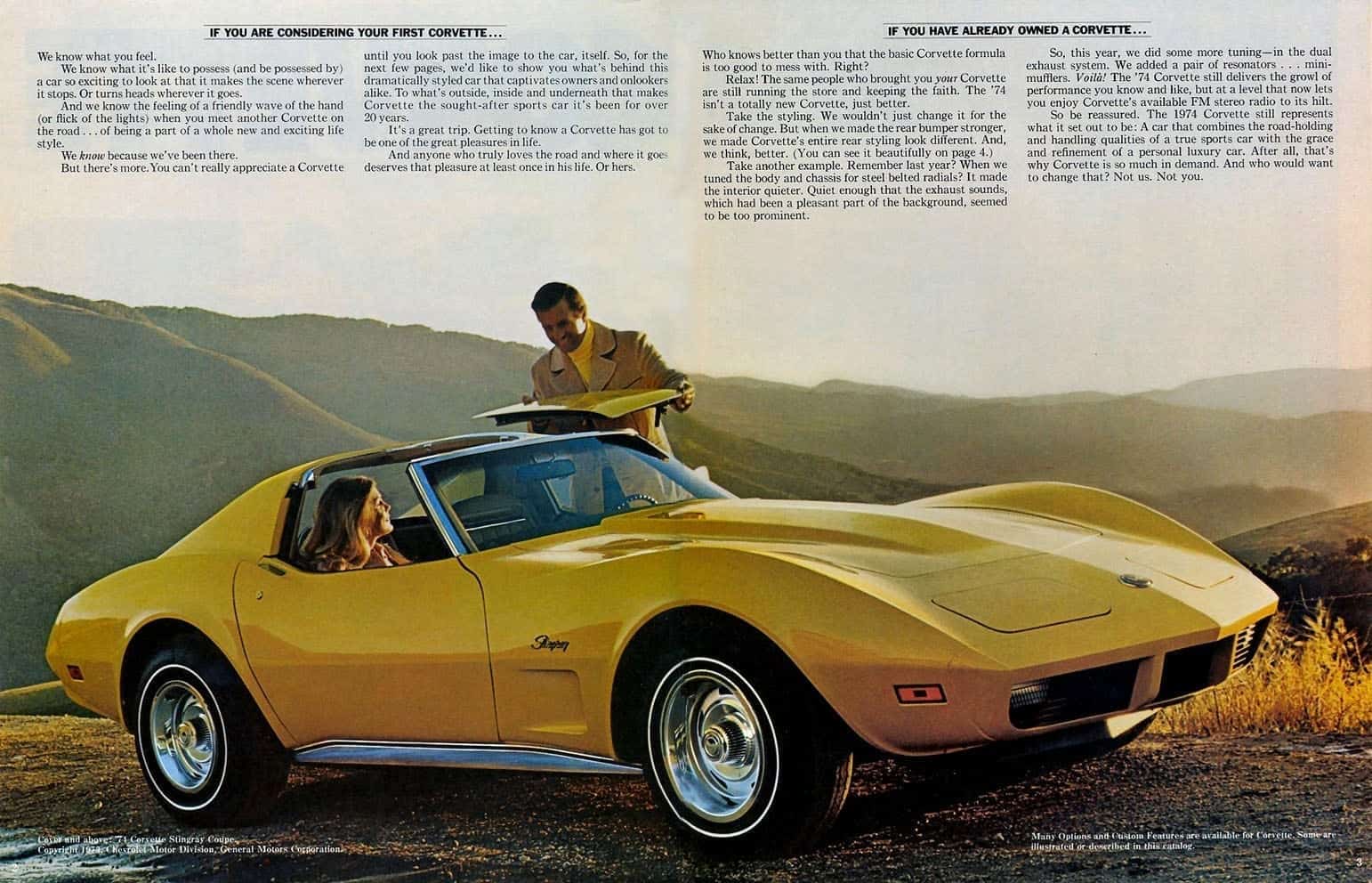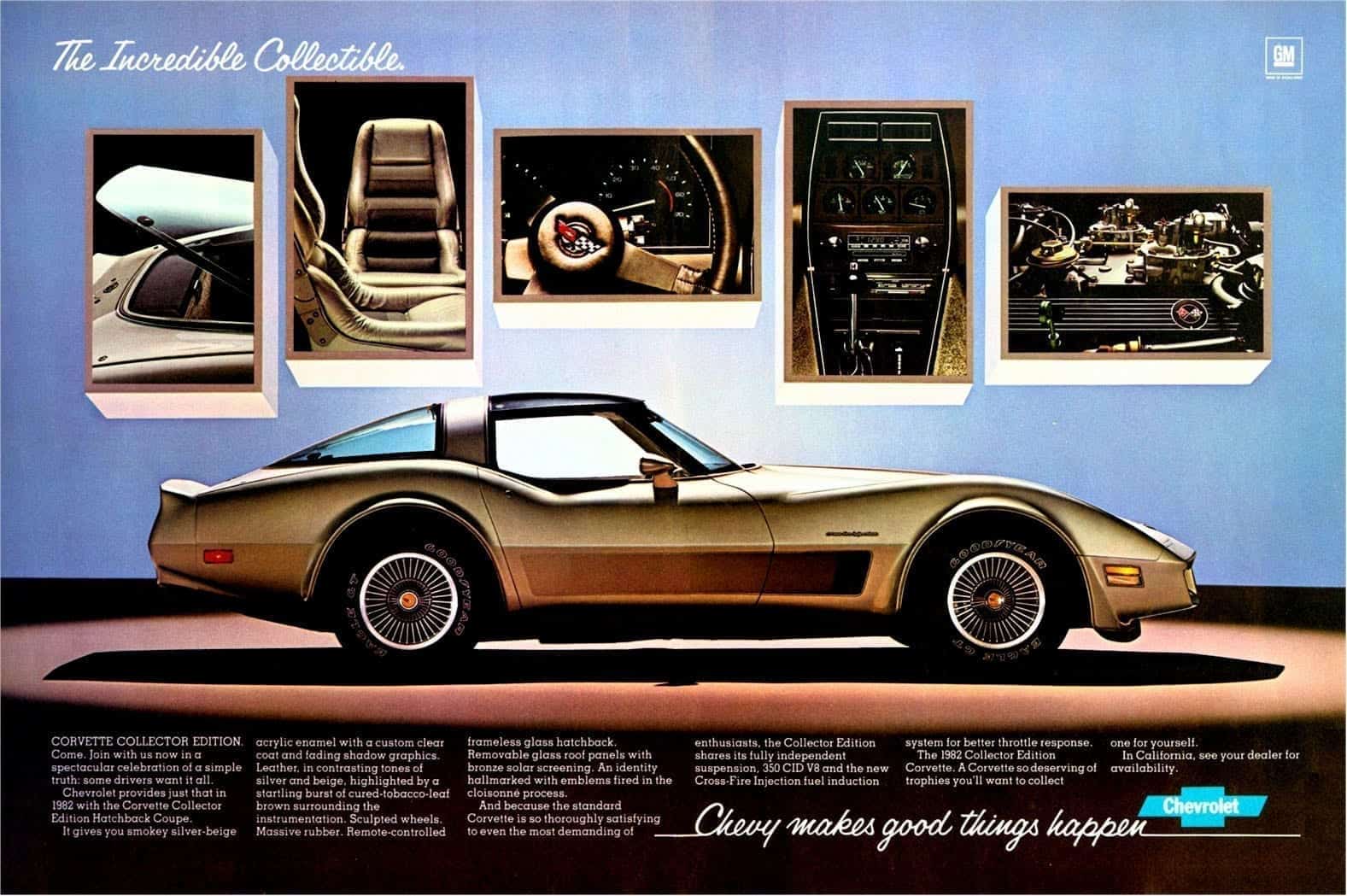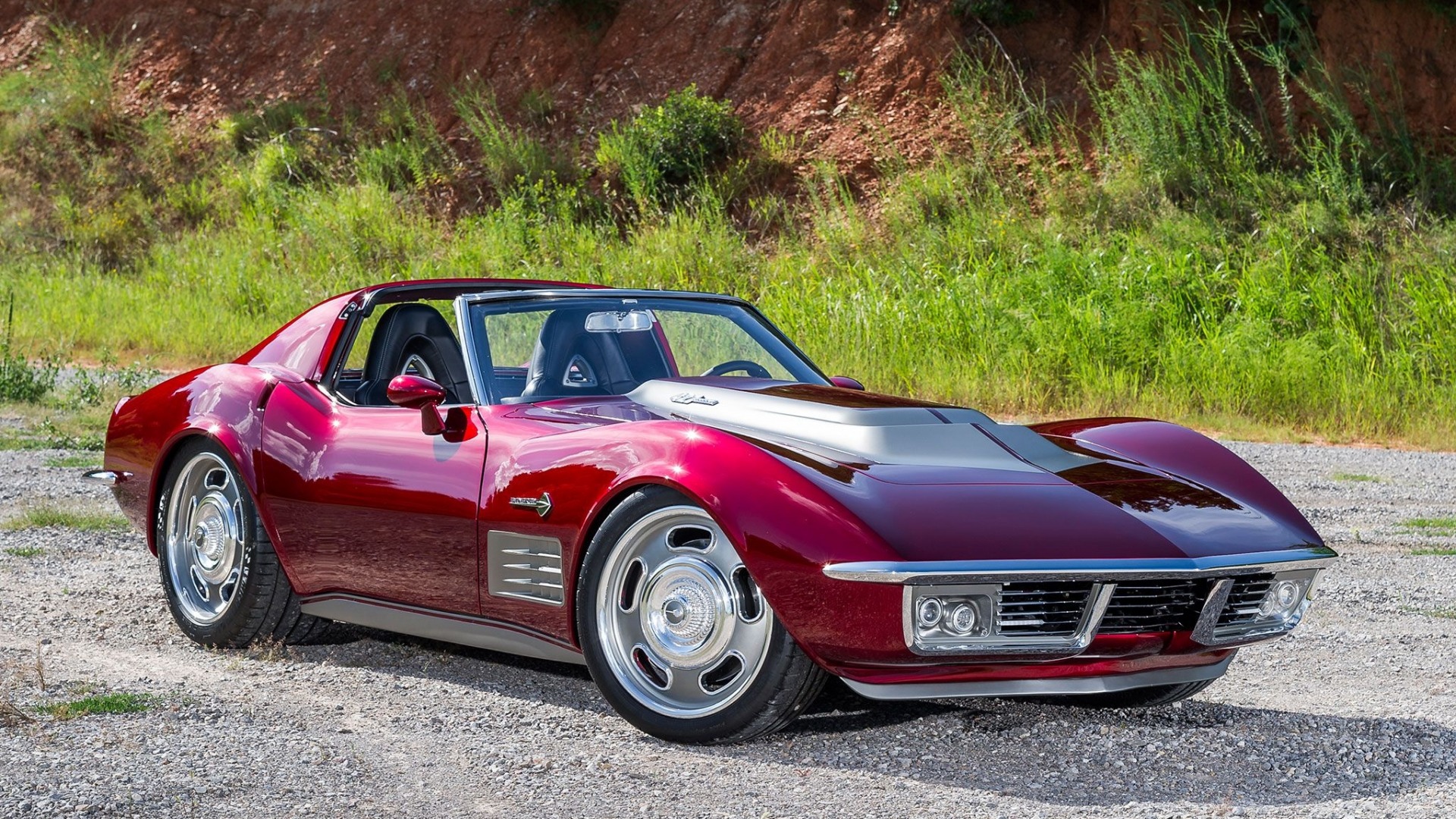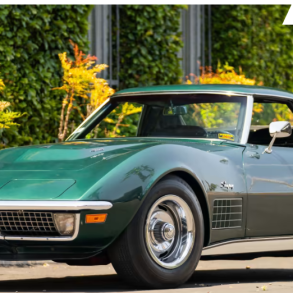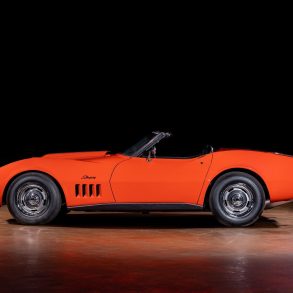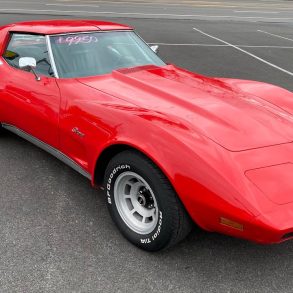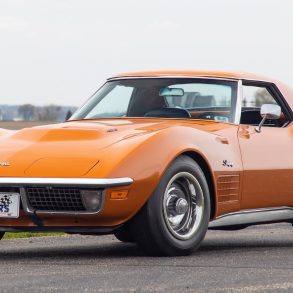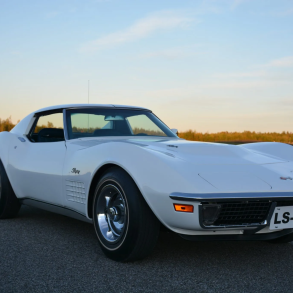If we judge the C3 Corvette by its factory specs alone, the story doesn’t add up. The car went from the fan-favorite big blocks of the late 60s, making 300-400 horsepower, to anemic 165-hp engines by the mid-70s. Federal safety regulations forced designers to reshape its body, while emissions laws had choked its engines. Yet despite these challenges, or maybe because of them, the third-gen Corvette became the single most modified Corvette GM ever built.
Spanning fifteen model years (the longest run of any Corvette), the C3 was updated more often than any Corvette before or after it. Almost every year brought a new engine, a revised intake, a fresh emissions system, or a body tweak that subtly changed the car’s character. In a way, the C3 had an identity crisis. It was part muscle car, part grand tourer, and part experimentation platform, which created space for owners to also start modifying their Vettes. Long before “restomod” became a buzzword, the C3 Corvette made modding a cultural norm.
A Corvette Thriving in a Changing World
When the C3 was launched in 1968, it inherited the “Mako Shark” styling that had made the Corvette so unique in the mid-sixties. The car looked like it meant business, and early models had the engines to match. According to the GM Heritage Center’s 1968 Corvette press kit, buyers could choose from small-block and big-block V8s with ratings of up to 435 horsepower. The C3 also offered multiple transmissions and options that made a more appealing for personalization.
Overall, the C3 had a few first couple of years, but the auto industry, particularly in the U.S. was about to go through a major shift. First, safety regulations started changing the shape of American cars. Also, emissions laws required automakers to rethink their engines. Then, in 1973, the oil crisis happened, followed by another in 1979. Horsepower ratings fell sharply, and by the middle of the decade, the base Corvette engine was producing only 165 hp. No Corvette generation saw more mechanical and regulatory changes than the C3, and those changes showed up almost every model year.
Still, the C3 turned out to be a very versatile car. Chevrolet kept revising the body, the bumpers, the emissions systems, the engines, and even the interiors, but the Corvette thrived for more than a decade. And that constant factory evolution gave owners permission to do the same.
By the late seventies, many C3s were mechanically restricted by emissions-era equipment. The body still looked aggressive, but the performance no longer matched the styling. That imbalance created an opportunity, and owners saw potential in the platform.
A Factory That Never Stopped Tweaking the Formula
One of the most interesting things about the C3 is the way Chevrolet kept changing it. The C3 evolved every few years to meet new standards or revive interest in the brand. For example, in 1969, the small-block grew to 350 cubic inches. In 1970, the LT-1 small-block arrived, and the big-block LS7 was developed but never officially released. By 1973, the front bumper had switched from chrome to polyurethane to meet new safety standards. By 1974, the rear bumper had changed as well. In 1975, catalytic converters entered the picture and power dropped again. Late in the generation, Chevrolet focused on improving fuel economy and reducing weight. Cross-Fire Injection appeared in 1982 as an early step toward modern fuel injection.
The C3 experienced more year-to-year revisions than any Corvette up to that point. Because Chevrolet kept reworking the car, and owners started seeing the C3 not as a fixed design but as a series of possibilities. Each version had something to offer but also something to improve. In a way, the factory showed owners how flexible the platform could be, and the modding culture simply took that idea further.
Two Great Examples of Modern C3 Mod Builds
If you want to see how the modding spirit of the C3 lives on today, there are many great examples online. One of the most popular comes from Taco Joe on YouTube. The channel features a modernizetion of a 1977 C3 Corvette through a number of modifications. The video highlights how these upgrades make this C3 easier to live with and bring performance and reliability in line with modern muscle.
Another example appears in a feature about a 1972 Corvette that received a full makeover from its owner. The car was reworked with upgraded suspension for better handling, fresh paint and body modifications for a cleaner look, custom wheels and tires, and a set of exhaust and ignition upgrades to wake up the big-block under the hood. These examples show how the C3 has become a canvas for creativity.
A Legacy Built by the Fans
The C3 Corvette lived through a turbulent era in the auto industry. It adapted and thrived through new safety rules, two fuel crises, rising insurance costs, and emissions restrictions that forced significant sacrifices in performance. Other performance cars of the sixties and seventies didn’t survive that era, but the Corvette did and kept moving forward.
Today, the C3 is remembered for its resilience and for its potential. Owners continue to modify their cars, and that’s part of what makes the third-generation Corvette so beloved and keeps it evolving to this day.
C3 Corvette: Quick Facts & Numbers
| Year | Production | Base Engine | Optional Engines | Key Fact |
|---|---|---|---|---|
| 1968 | 28,566 | 327 V8 (300 hp Gross) | 327 V8 (350 hp), 427 V8s (390, 400, 430, 435 hp) | First year of the C3’s “Shark” styling and the final appearance of the 327 small-block. |
| 1969 | 38,762 | 350 V8 (300 hp Gross) | 350 V8 (350 hp), 427 V8s (390, 400, 435 hp) | Introduced the single-word Stingray badge; last year for the L88 and the ultra-rare ZL-1. |
| 1970 | 17,316 | 350 V8 (300 hp Gross) | 350 V8 (370 hp LT-1), 454 V8 (390 hp LS5) | Debut of the LT-1 and 454 big-block; production dipped to the lowest volume of the entire C3 run. |
| 1971 | 21,801 | 350 V8 (270 hp Gross / 205 Net) | 350 V8 (330 hp LT-1), 454 V8 (365 hp LS5), 454 V8 (425 hp LS6) | High-compression engines made their final appearance; Chevrolet published both Gross and Net horsepower. |
| 1972 | 27,004 | 350 V8 (200 hp Net) | 350 V8 (255 hp LT-1), 454 V8 (270 hp LS5) | Net horsepower became the standard rating. Chrome bumpers and the removable rear window were discontinued after this year. |
| 1973 | 30,464 | 350 V8 (190 hp Net) | 350 V8 (250 hp L82), 454 V8 (275 hp LS4) | The Corvette adopted a urethane front bumper, and the rear window was redesigned so it could no longer be removed. |
| 1974 | 37,502 | 350 V8 (195 hp Net) | 350 V8 (250 hp L82), 454 V8 (270 hp LS4) | Big-block engines were offered for the last time; the rear bumper switched to urethane to match the front. |
| 1975 | 38,465 | 350 V8 (165 hp Net) | 350 V8 (205 hp L82) | Final convertible until 1986; catalytic converters debuted to meet emissions regulations. |
| 1976 | 46,558 | 350 V8 (180 hp Net) | 350 V8 (210 hp L82) | The “Stingray” script disappeared from the fenders; power steering and power brakes became standard equipment. |
| 1977 | 49,213 | 350 V8 (180 hp Net) | 350 V8 (210 hp L82) | Featured a redesigned center console; also marked the strongest year for convertible production in the C3 era. |
| 1978 | 46,776 | 350 V8 (185 hp Net) | 350 V8 (220 hp L82) | Gained a new fastback-style glass rear window and a special 25th Anniversary edition. |
| 1979 | 53,807 | 350 V8 (195 hp Net) | 350 V8 (225 hp L82) | The most-produced Corvette year ever — a record that still stands. |
| 1980 | 40,614 | 350 V8 (190 hp Net) | 350 V8 (230 hp L82 California) | Underwent weight reduction and aerodynamic tweaks; final year with more than one engine choice. |
| 1981 | 40,606 | 350 V8 (190 hp Net) | N/A | The L81 became the sole nationwide engine; this was also the last year a manual transmission was offered. |
| 1982 | 25,407 | 350 V8 (200 hp Net) | N/A | Closed out the C3 generation with the introduction of Cross-Fire fuel injection and a four-speed automatic. |


